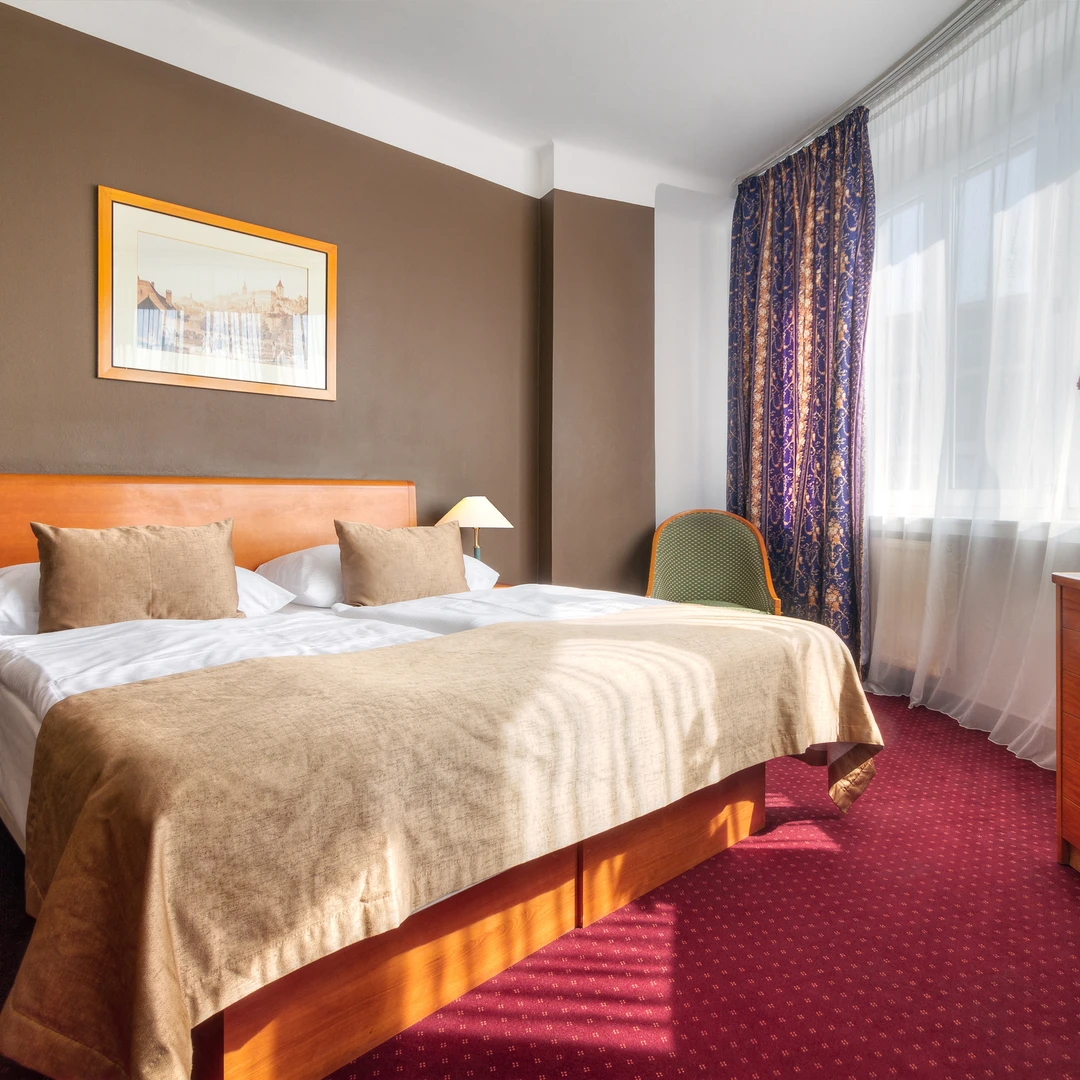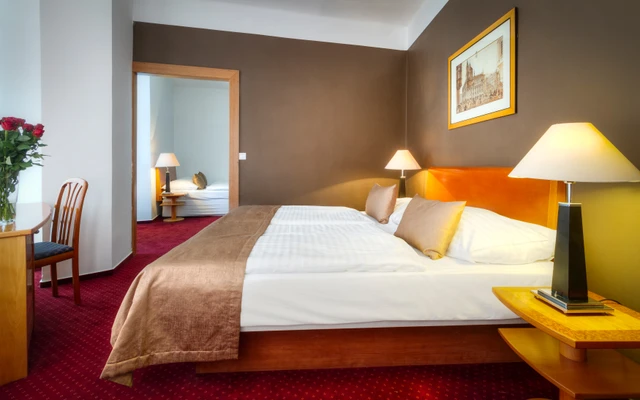![]() Special offer - 10% discount for all direct bookings, use promo code AVE
Special offer - 10% discount for all direct bookings, use promo code AVE

Hotel Harmony is a traditional three star hotel situated in the very centre of Prague. Thanks to its location it is the ideal gateway to the historical centre, providing easy access to the city´s most popular monuments and points of interest.
The area is lively with plenty of restaurants, bars and cafés in close vicinity. Palladium, the biggest shopping mall in the centre of the city, is mere 5 minutes of walk. Metro station Florenc is only a 100 meters from the hotel and so are the closest bus and tram stops.
Rooms
- Free WIFI
- Flat-screen TV
- Refrigerator
- Safety deposit box
- Tea and coffee making facilities
- Hairdryer
- Telephone
- Non-smoking

Services and useful information
- 60 comfortably equipped rooms
- Reception 24h
- Hot and cold buffet breakfast
- Luggage storage
- Free WiFi
- Exchange services
- Concierge services
- Hotel transfers
















